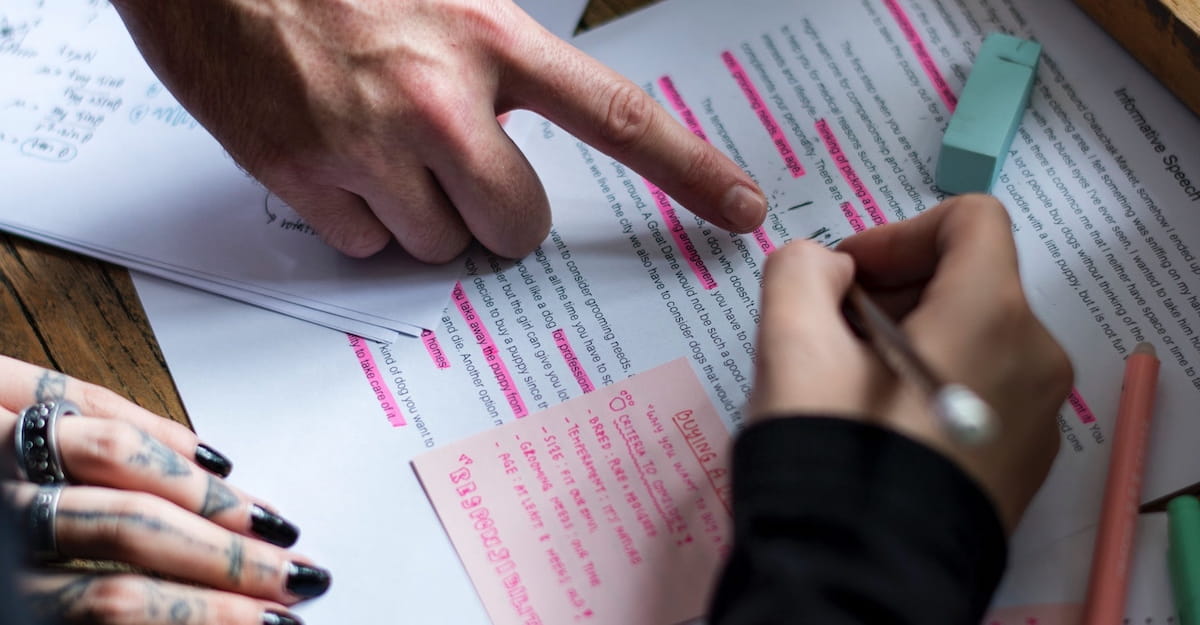
Here’s a quick kinesthetic grammar activity to introduce the topic of adverbs. If you can pair a physical activity with a concept, studies show that retention levels among students increase. Follow this easy, step-by-step guide to teach adverbs to your students.
Step 1: Ask For Two Volunteers
Ask for two student volunteers to come to the front of the class. Walk them outside the classroom door and quietly tell one student that when you tell her to do so, to slowly enter the classroom and walk to her seat. Tell the second student to do the same but to quickly enter the classroom and walk to her seat.
Step 2: Prep the Class
Before you have the two students enter the classroom, tell the rest of the class to observe how each student volunteer enters the classroom. Ask the first student to enter the classroom: “Okay, [Student One], come on in.” (Allow confusion, wonderment, and giggles to ensue.) Ask the second student to enter the classroom: “Okay, [Student Two], you’re next!” (More confusion, giggles and wonderment…)
Step 3: Let the Adverbs Fly!
Now, ask the students to raise their hands to tell you in one word how each student walked into the classroom: “How did [Student One] walk to her seat?” You’ll get a variety of responses; some students will actually use adverbs while others will not. Validate everyone’s response of course, but be sure to repeat and emphasize the adverb when a student uses one: “Ah, so [Student One], walked slowly to her desk,” or “So you’re saying [Student Two] walked quickly or swiftly to her desk?” Be sure to emphasize the adverbs in your sentence.
Step 4: Explain Adverbs
Finally, explain to the students that adverbs are simply words that modify or alter a verb. (Yes, we know they also modify adjectives and other adverbs, but let’s just focus on verbs right now) Let them notice that the verb “walked” remains constant, but it can be modified (or changed) by using different adverbs. Ask the class to raise their hands and, using adverbs, describe other ways of how the students could have walked into the classroom other than “slowly” or “quickly.” Afterwards, let them know that adverbs can also modify adjectives and other adverbs but that the lesson for those will be another time. Stick with adverbs modifying verbs until they have a solid understanding – the other two (adjectives and other adverbs) can be a bit more difficult to conceptualize at first.
With a simple kinesthetic activity on adverbs like this one, you’ve just established another level of meaning which will help students recall the function of adverbs. Now, continue on with the rest of your grammar lesson and have them log into GrammarFlip to watch the Adverbs Modifying Verbs video lesson and to complete the practice exercises. Don’t forget to have them complete the GrammarFlip writing activities as well!
Read More

English Grammar 101 Alternatives

When You Ask for Analysis but You Get Summary Instead

Establishing Confident Writers Through Creativity and Self-Expression

Brainstorming Through Writer’s Block

Four Steps to Teaching Your Students Adverbs

How to Fire Your Internal Critic

What Just 10 Minutes of Daily Journaling Can Do for Student Writing



